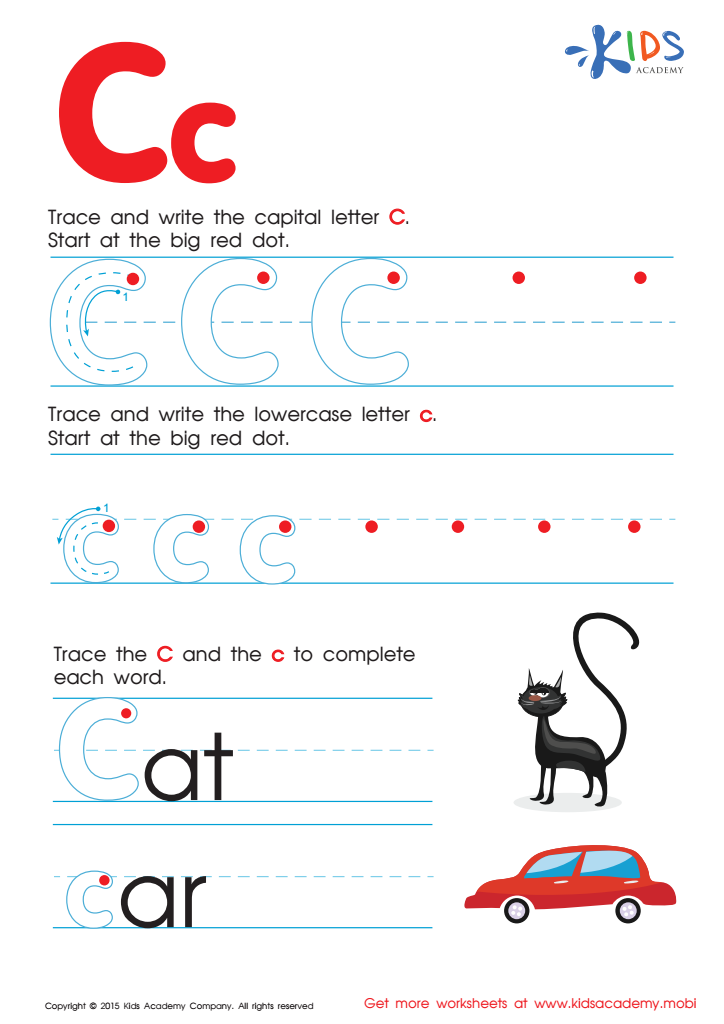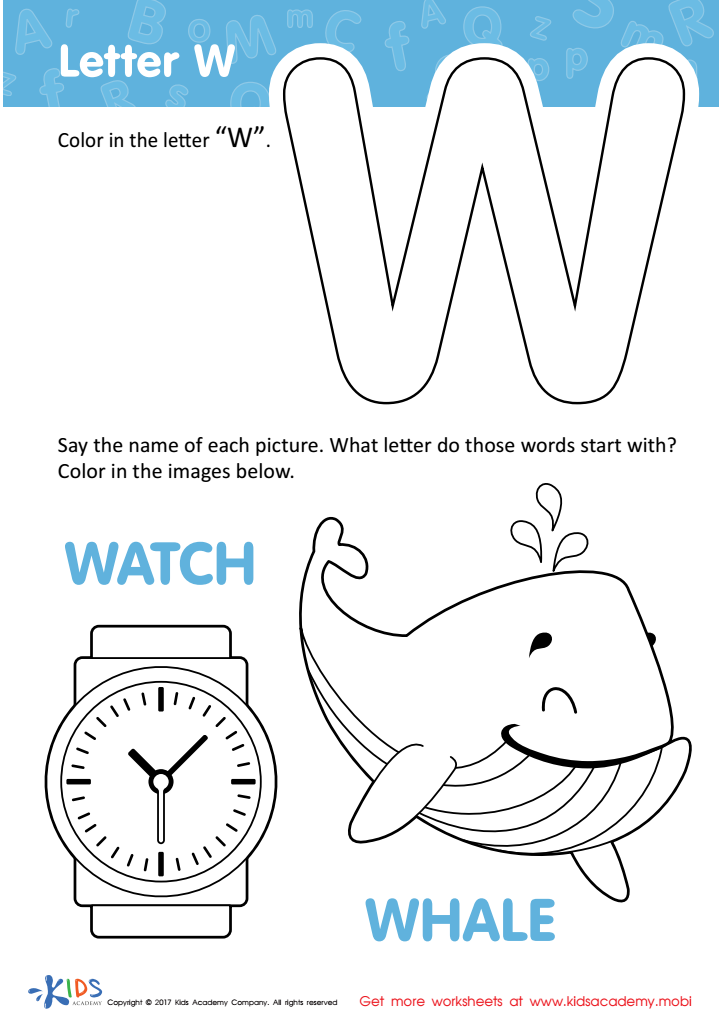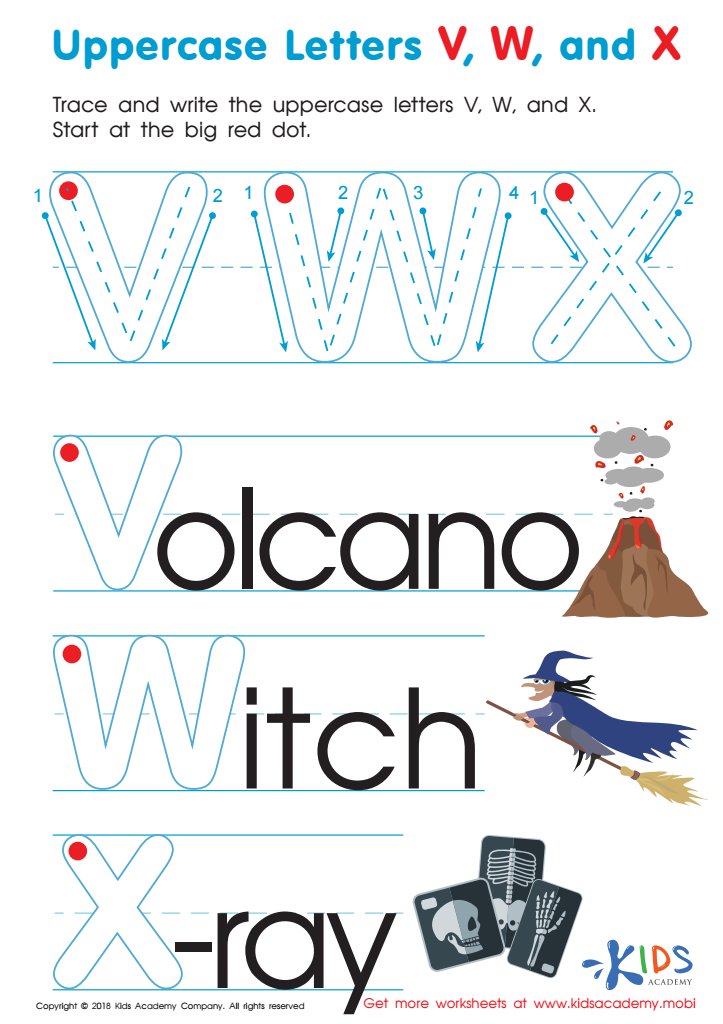Letter tracing skills Normal Letter Recognition Worksheets for 6-Year-Olds
3 filtered results
-
From - To
Boost your child's writing prowess with our "Letter Tracing Skills: Normal Letter Recognition Worksheets" designed specifically for 6-year-olds. These engaging worksheets offer young learners a fun and effective way to practice letter formation, enhance fine motor skills, and solidify letter recognition. Through guided tracing activities, children can develop essential pre-writing skills necessary for future academic success. Perfect for home or classroom use, these printables ensure that kids gain confidence as they master the alphabet, setting a strong foundation for reading and writing journeys. Explore the perfect blend of learning and fun today!


Letter C Tracing Page


Letter W Coloring Sheet


Uppercase Letters V, W, and X Worksheet
Parents and teachers should care about letter tracing and letter recognition skills for 6-year-olds because these foundational abilities are crucial stepping stones toward literacy development. At this age, children are transitioning from recognizing shapes and sounds to forming meaningful associations that underpin reading and writing proficiency.
Letter tracing helps children refine their fine motor skills, which are necessary for writing legibly. Learning to control a pencil to trace letters strengthens hand-eye coordination, muscle memory, and dexterity — all of which are important not just for writing but for numerous daily tasks.
Normal letter recognition, on the other hand, allows children to identify and differentiate letters quickly and accurately. This recognition is essential for decoding words, a skill critical for reading fluency. The ability to recognize letters effortlessly lets children focus on comprehending text rather than just deciphering it, thereby fostering a love for reading and learning.
Early mastery of these skills contributes to academic confidence and sets a strong foundation for future schooling. Children who struggle with letter tracing and recognition may find learning to read and write more challenging, impacting their overall academic experience. Therefore, prioritizing these skills encourages cognitive development and equips children with tools for academic success and lifelong learning.

 Assign to My Students
Assign to My Students





















